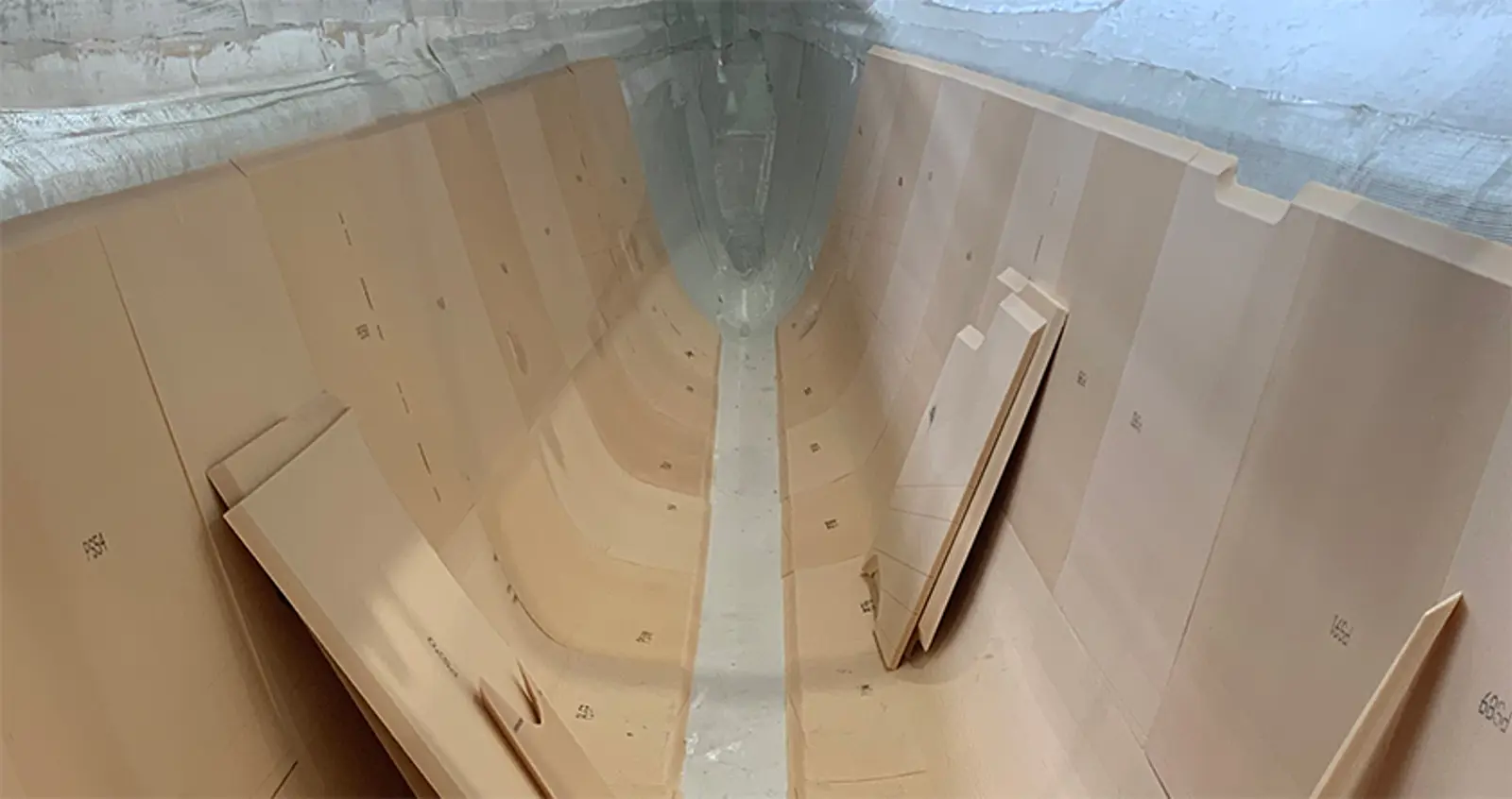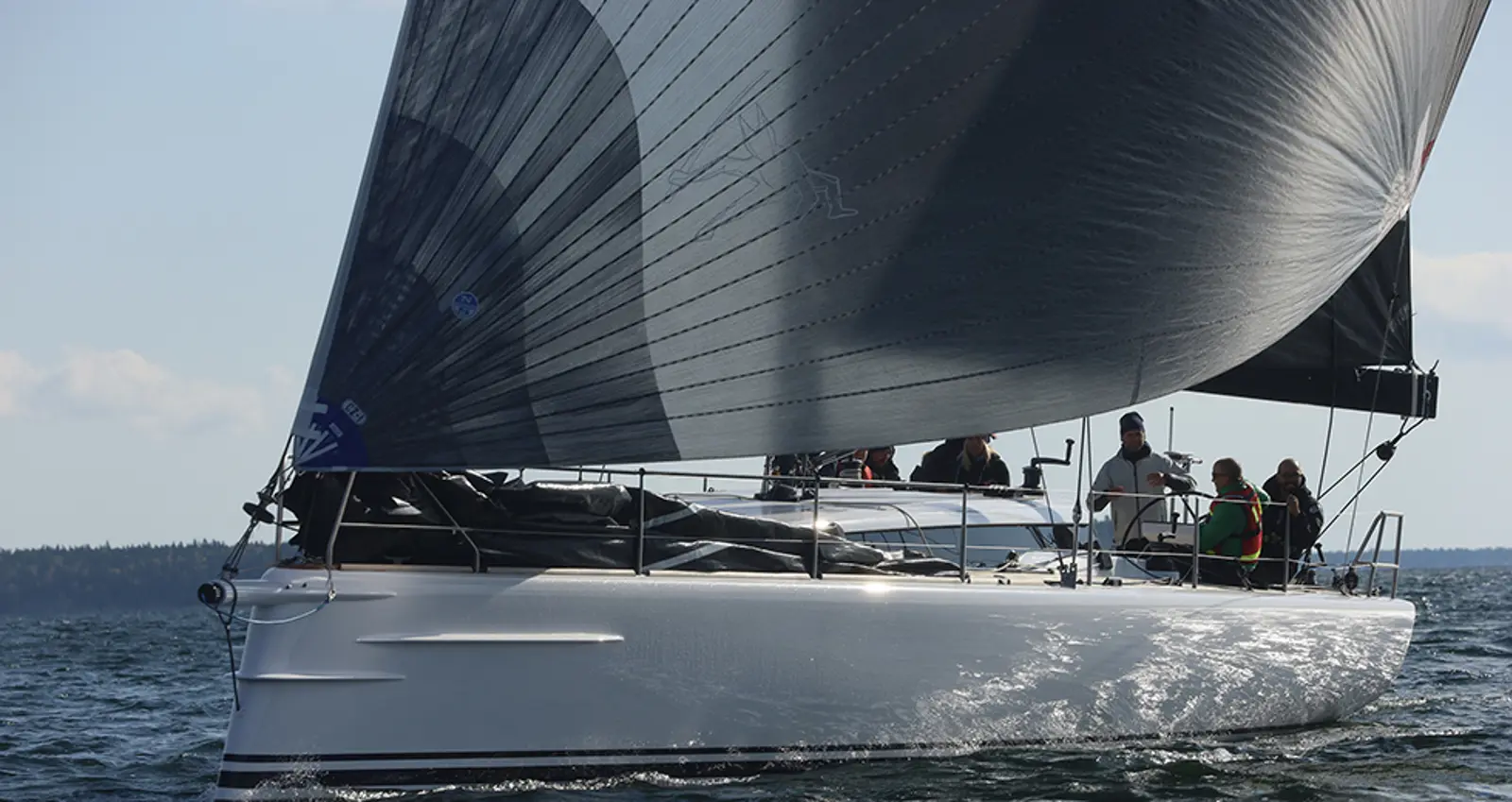
Choosing a suitable core material is essential when designing a sustainable application. On the one hand, it's a question about the material's direct environmental impact, like recyclability. Conversely, it's also about its density, life cycle and strength-to-weight ratio. Combining sandwich composite core with Advanced kitting can contribute to a more sustainable marine industry and add substantial value to your application. With an advanced kit, you will get up to 50-75% lower resin consumption than a standard Industrial kit, reduced structural weight and reduced resin cost.
Low density equals less material use
Composite materials benefit the environment in many ways. Due to their low-density properties, lightweight sandwich cores require only a small amount of raw material, meaning relatively little must be transported from the source to the construction site. When applied, sandwich solutions enable lightweight, flexible, and aerodynamic designs that reduce the fuel consumption of vehicles and vessels and create new design opportunities. Combining these benefits with Advanced Kits can lower the weight even more.
Advanced kitting for maximum weight-saving
A kit is a tailor-shaped set of core elements. It can consist of simple pre-cut core panels or complex 3D shapes made with CNC routing. Each piece is pre-cut and numbered to fit precisely into its designated place in the mould. Kits are designed based on your application’s weight, cost, and quality requirements. At Diab, our kit engineers consider the geometry and your manufacturing process when designing each kit.
Diab’s innovative Advanced kits offer an optimised fit in the mould, up to 75% reduced resin consumption, and improved cosmetics for infusion and prepreg applications. Combining our extensive knowledge of kits and infusion with custom software created especially for the task, we can optimise the curvature cuts required in the core to perfectly fit the local curvature of your mould while minimising resin usage.
Using a CNC proprietary cut profile for each kit detail, the core is cut partway through its thickness, eliminating the need for a scrim backing, leaving a smooth surface and curvature on the mould side.
The core can also be perforated to allow for resin distribution and airflow. You can add additional grooves to the core surface to distribute resin without a flow mesh. The result is a kit with excellent formability, reduced resin consumption and an improved surface finish.

Advanced kits and the Shogun 50
One example of how Advanced Kits benefits the marine industry is the Shogun 50 from Rosattra Boatyard, a Swedish boat-building yard that offers custom-made sailing boats. The hull of the Shogun 50 does not quite follow the traditional design with a wide and flat stern, common among modern racing sailboats. Instead, it features a slimmer stern and a narrow hull with a keel that can be lifted from 3.5 meters depth to 2 meters, allowing for more flexibility in the choice of harbour. However, the most spectacular thing about the Shogun is the incredibly low weight of 7,800 kg.
To save weight and achieve a perfect fit, from the keel to the mast, the builders decided to go for an entire sandwich solution using an Advanced Kit of PVC core with carbon fibre laminates. The same concept was also used for the interior, allowing for an extremely light boat.
The Advanced Kit further decreased the resin usage in the PVC core, allowing for a light yet strong structure, and both the hull and the deck are as stiff as required for challenging sailing. The demanding weight goal for the intended boat racing class has also been achieved.

Shogun 50 from Rosattra Boatyard.
Benefits of Advanced Kits
Are you interested in learning about how Diab can make your application more sustainable? Contact us!
